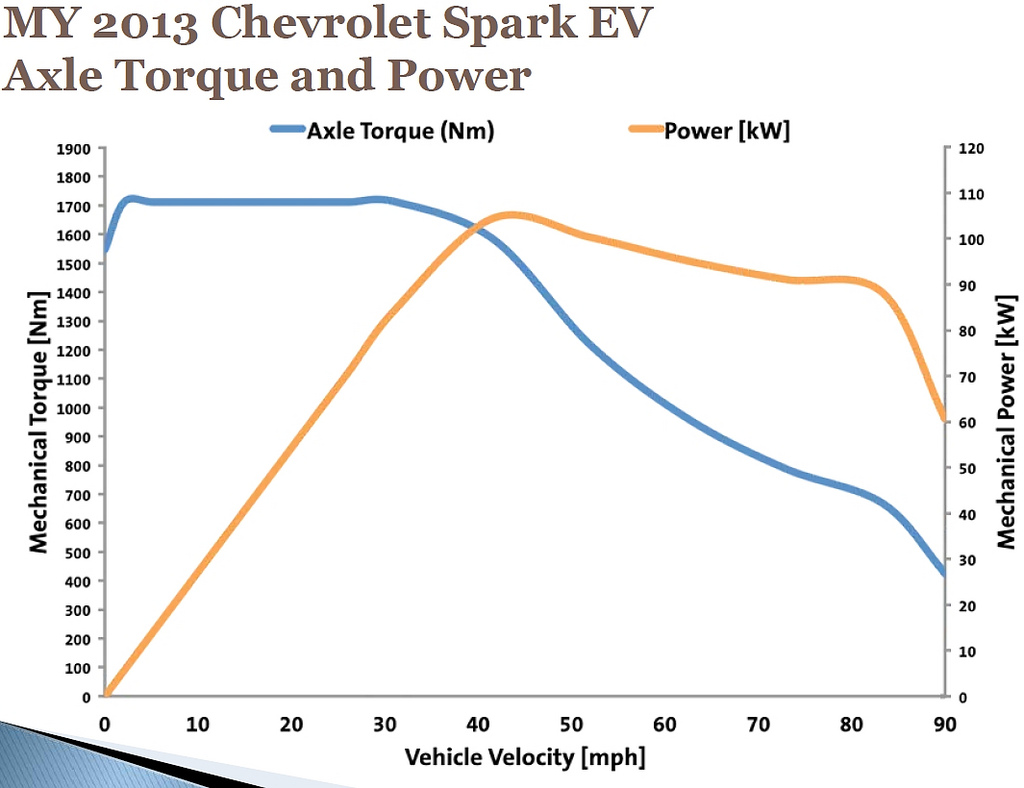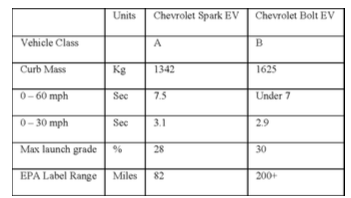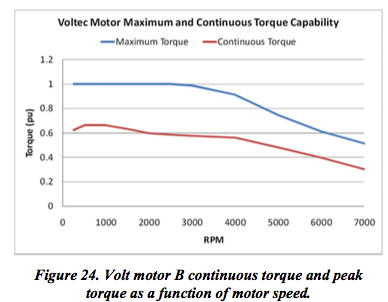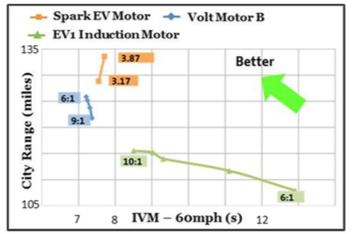SparkevBlogspot
Well-known member
- Joined
- May 25, 2015
- Messages
- 498
Since it takes about 30 kW for 8% grade at 50 MPH, about 20 kW would be needed to make it hold. SparkEV is capable of accelerating 0.4G, about 23 degrees. 23 degrees is about 42% grade. That steep of a road doesn't exist. I doubt you were even remotely close to full throttle on the road you were on.kevin said:I don't have my Spark anymore but ...
When I have tried balancing the car on a local extremely steep hill (steep enough so I fall off the back of my bike when trying to ride up it!) the indicated power was in the 10-20kW region when the car was held stationery (admittedly not at full throttle but close)
There is a graph in the paper by Steven Tarnowsky (page 9) showing the power vs speed. - full power is not reached until about 40mph.
As I said the PWM control of the motor current means that the motor current can be a multiple of the battery current by a large factor, probably 10 times at low speed.
I would expect that the controller performs cycle by cycle current limiting so there should not be any perceptible time delay in the current limiting.
kevin
Not sure if you're talking abut the wheel torque/power curve graph, but if you saw 0 MPH power, it shows 0 HP while the torque is over 90% of peak (and peak at 5 MPH). But at the motor, as you mentioned, torque is proportional to current. Unless you think torque does not relate to current, motor would be sucking close to 140 HP at 0 MPH.
PWM means nothing if the duty cycle has to be practically 100% to deliver the current.










